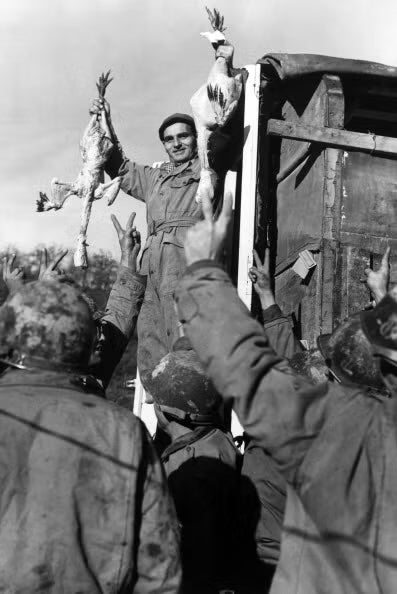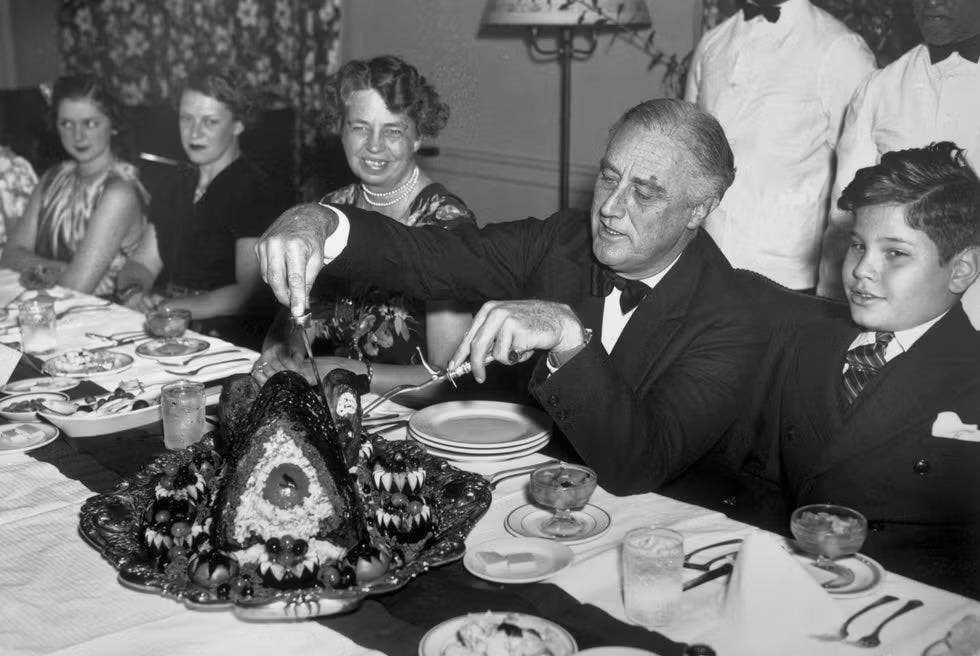Thanksgiving
Origin and tradition of the celebration
Thanksgiving is one of the most important celebrations of the year in the United States. A special day when family and friends gather around the table to celebrate gratitude.
The origin of Thanksgiving dates back to 1621, when English settlers and the Wampanoag tribe held a feast as a sign of thanks for the autumn harvest. The first year in the ‘New World’ had been hard, and the Indians had been crucial in helping them learn farming and hunting techniques. The feast lasted three consecutive days and was held in Plymouth (now Massachusetts).
From then on, thanksgiving feasts were celebrated in different communities over the years. In the 19th century, during the Civil War, Republican President Abraham Lincoln decided to declare Thanksgiving Day a bank holiday in 1863, celebrated thereafter on the last Thursday of November.
In 1939, as the last Thursday of the month was the 30th, President Franklin D. Roosevelt wanted to move Thanksgiving to the second-to-last Thursday in November in order to add an extra week of Christmas shopping and give the economy a boost. This caused an uproar and citizens protested, calling it ‘Franksgiving’. However, this change was only in effect for two years until 1941, when Congress approved the return of the holiday to the fourth Thursday in November.
The traditional Thanksgiving meal is turkey with mashed potatoes and cranberry sauce. Although it has not been proven with certainty that turkey was eaten at the 1621 feast, it is said to have been chosen because of its larger size compared to chickens, ducks and geese, ideal for serving at a large meal.
We share the beauty of the moments around the table, the way of turning every meal into a special moment, the love in the small details.

Photograph of President John F. Kennedy pardoning a turkey in the White House Rose Garden for Thanksgiving 1963. Source: National Archives. During George H. W. Bush's presidency, a custom was begun that has been adopted by all of his successors, of ceremonially ‘pardoning’ the turkey. It is tradition that this turkey comes from the hometown of the president of the National Turkey Federation (NFT).






Abraham Lincoln by Alexander Gardner. Glass plate collodion negative, 1863. Source: National Portrait Gallery, Smithsonian Institution
Photograph of President Eisenhower feeding a turkey he received from the Turkey Foundation on 4 November 1954, at the White House. Source: National Archives
Photograph of a US Army soldier with two turkeys that were to be taken at Thanksgiving during the war.
Episode of ‘Friends’ celebrating Thanksgiving
Photograph of President Roosevelt carving the Thanksgiving turkey in 1938 in Warm Springs, Georgia.
A public notice about one of several Thanksgiving proclamations Lincoln issued during the Civil

























